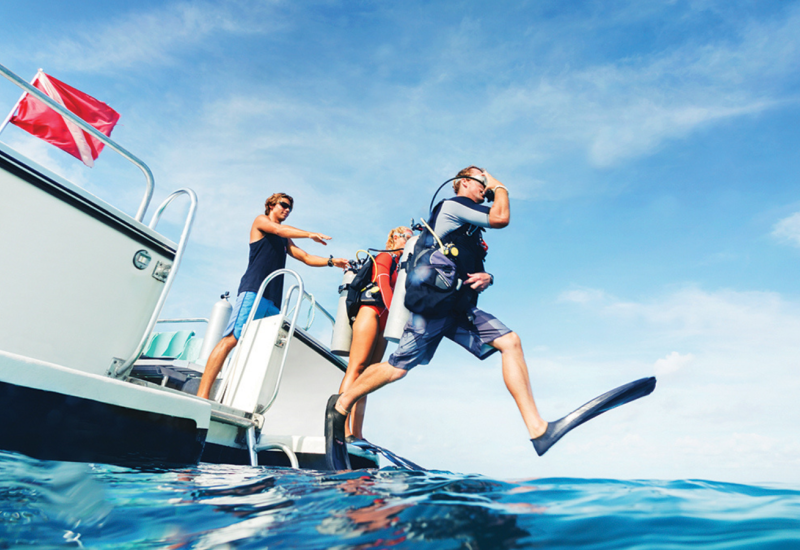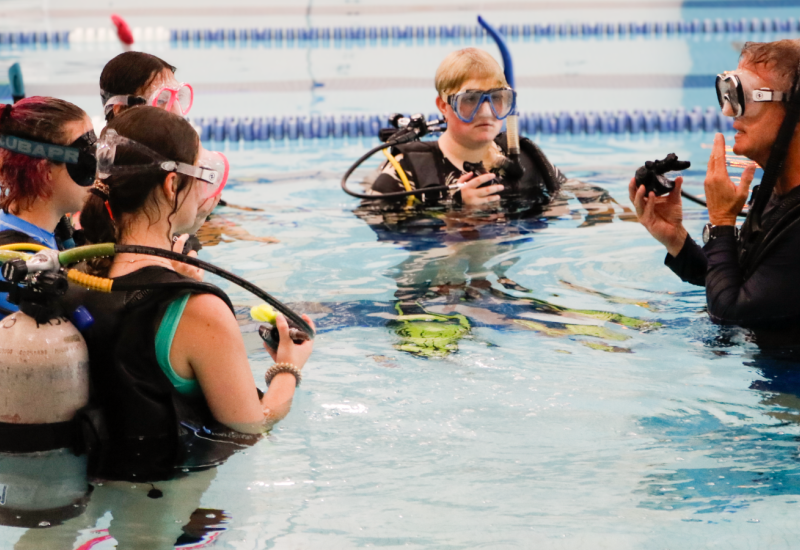Underwater Communication Tips for Scuba Divers
Talk is cheap. We do so much of it on dry land that the underwater world should be a welcome respite from the constant flapping of jaws. Diving is a team sport, however, so communication between buddies, groups and guides is critical to our safety and enjoyment. From the simplest hand signals to the most complex tech solutions, consider these tips for getting your point across.
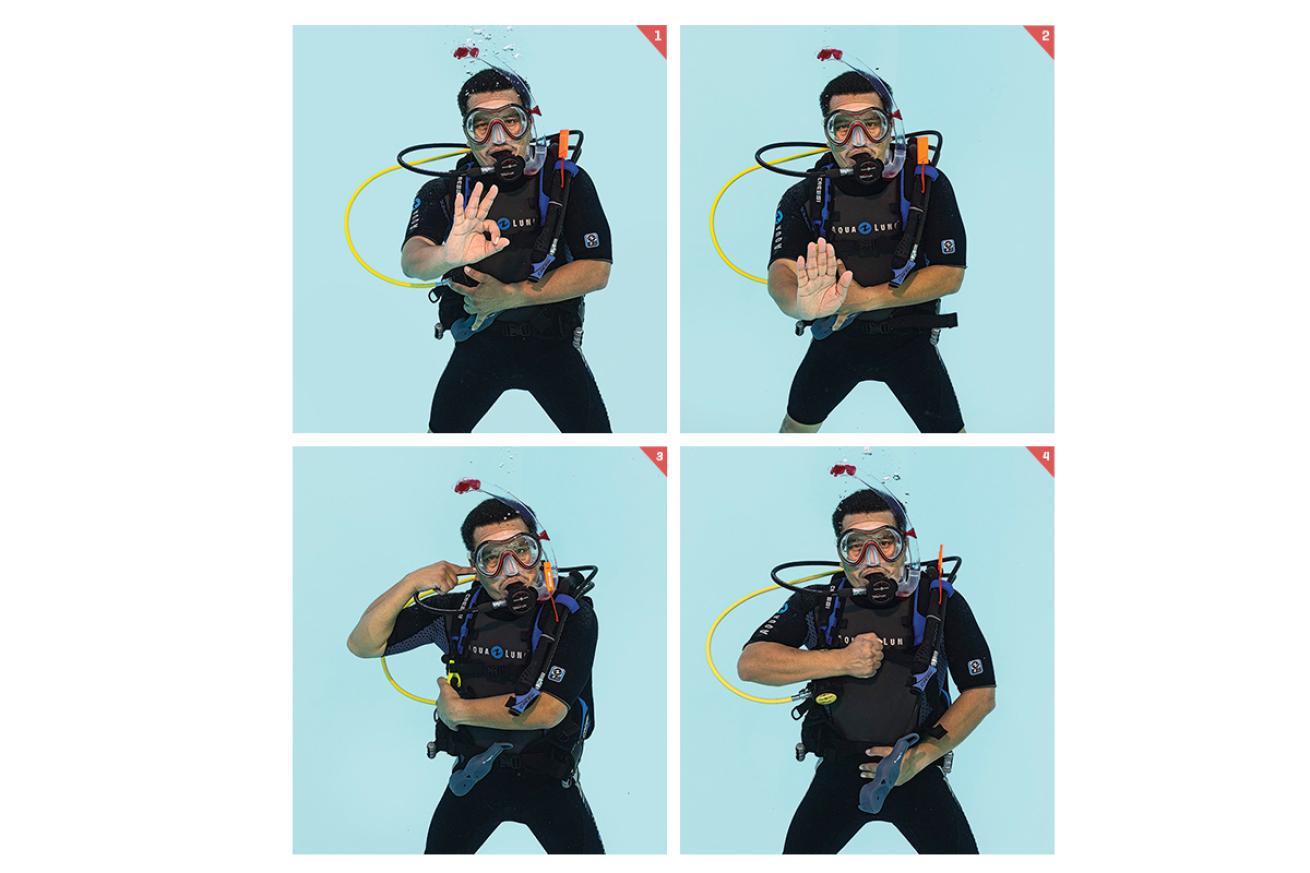
Courtesy PADI
- OK? OK.
- Stop, hold it, stay there
- Ears not clearing
- Low on air
GET HANDS-ON
Hand signals are fundamental. We all learn the basics early in our open water course and build upon this all-important foundation as we progress through more advanced levels of training. But, unfortunately, even the most basic signals are not often intuitive. How many times have you seen a new diver give an enthusiastic “thumbs-up,” instead of an “OK” when prompted? Obviously, they’re not signaling that they want to surface. This type of mistake is common—even for experienced divers who might have been out of the water for a while—reinforcing why it’s important to practice hand signals until they become muscle memory.
Incorporating dive signals into your topside lifestyle is a great way to keep it all fresh in your mind, especially during extended breaks in diving. Flashing signs at your dive buddy during dinner or teaching your kids simple signals to share are helpful methods to increase your opportunities to practice. And don’t ignore the chance to create custom signals with your dive buddies so that you can increase your nonverbal vocabulary—and the opportunity for inside jokes.
MORE: Scuba Diving Hand Signals Every Diver Should Know
GRAB THEIR ATTENTION
If divers perform perfectly executed hand signals underwater and no one sees them, are they actually communicating?
There are so many worthy distractions bombarding us during a dive that seizing the attention of our buddies is essential when there’s information to relay. Being mindful to maintain situational awareness and stay disciplined about basic buddy protocol is the first step in keeping a sightline for communication. The next is a good tool. All divers should have some kind of audible underwater signaling devices in their kits.
A simple noise maker—such as a tank banger, rattle or shaker—will create enough sound to carry through water to reach the ears of nearby divers. Most are small enough to fit inside a BC pocket, and others include a BC attachment clip for secure transport at depth. These simple options are affordable, nearly fool-proof to use and easy to maintain with proper cleaning and storage.
Even more effective is a mechanical air horn that blasts big decibels at a high pitch for a signal that’s nearly impossible to ignore by even the most absentminded divers. These models connect to your BC power inflator and offer settings for use both underwater and topside, which can be a lifesaver in emergency situations.
WRITE IT DOWN
When hand signals won’t convey enough information to fully realize your communication, only the written word will do. A dive slate provides a waterproof page on which to scribble messages, simple diagrams, maps or other nonverbal cues.
The simplest is a white plastic board that can be erased at will and comes with a tethered clip and an attached pencil. Basic slates are inexpensive and convenient for sharing with a buddy or a group. (Some even glow in the dark.) Another option is a wrist-mounted model, which offers improved streamlining, but increases the challenge for others to read when attached to your arm. Some feature a scroll of vellum that can be wound with a dial to produce a clean page without erasing. Waterproof notebooks can be preloaded with words and drawings but can be challenging to write on underwater. One of the most versatile is the magnetic slate that can be cleared with a single sweep, although the interface doesn’t allow for very detailed drawing.
Asking other divers—especially your local pros—about their experiences with different types of slates is a good method to inform your decision.
GO WIRELESS
You’ve likely seen full-face masks with integrated communication units on TV or in films, but these high-end rigs aren’t just for frothing celebrities screaming about sharks. Once the privilege of scientific, technical and public safety divers, full-face masks have become far more accessible to the recreational diver.
Armed with a wireless transmitter linking an internal microphone and a strap-mounted, external earpiece, divers can talk to each other in a method similar to a traditional two-way radio over a range of several hundred feet. Don’t expect a stereo-quality audio experience akin to your best noise-canceling headphones, but the systems absolutely allow divers to hold conversations. Some models offer a simple push-to-talk system, while other voice-activated systems require divers to work out a wait-your-turn-to- speak cadence to avoid talking over each other. Other benefits include improved cold-water comfort, no jaw fatigue and the ability to breathe through your nose.
Specialized training classes for each model are a necessity to use these rigs safely; there are setup, clearing and emergency operating aspects that you might not consider intuitive. But with a financial investment and some practice, the days of fumbling through hand signals and scribbling on slates can be gone forever—that is, unless you prefer the silent approach.
UNDERWATER COMMUNICATION GADGETS
These tools will help you get your point across underwater.
Dive Alert Plus
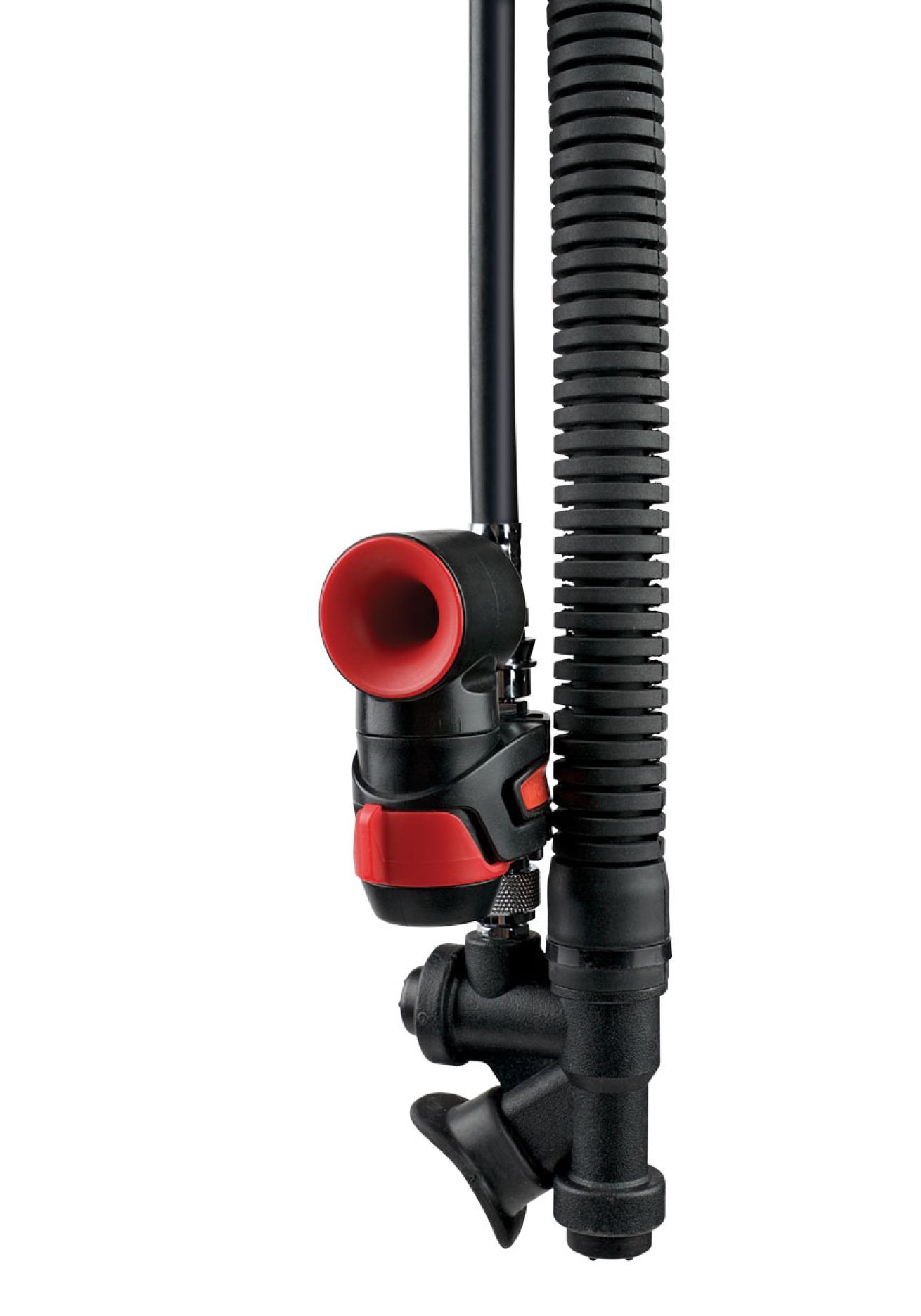
Jon Whittle$88.85 (DV1); divealert.com
This auditory signaling device quickly attaches to a BC’s power inflator, using gas to emit a loud sound in air or water with the push of a button. It can be heard a mile away out of water, a crucial resource in a stranded-diver situation.
Aquasketch Minno

Jon Whittle$54.95; aquasketch.com
There are plenty of slate options, but the Minno provides convenience with its scrolling function, allowing you to access 8 feet of waterproof paper by twisting a knob. It can be worn on the wrist, attached to your kit or stowed in a pocket.
OTS Spectrum Full-Face Mask with Buddy Phone Through-Water Transceiver
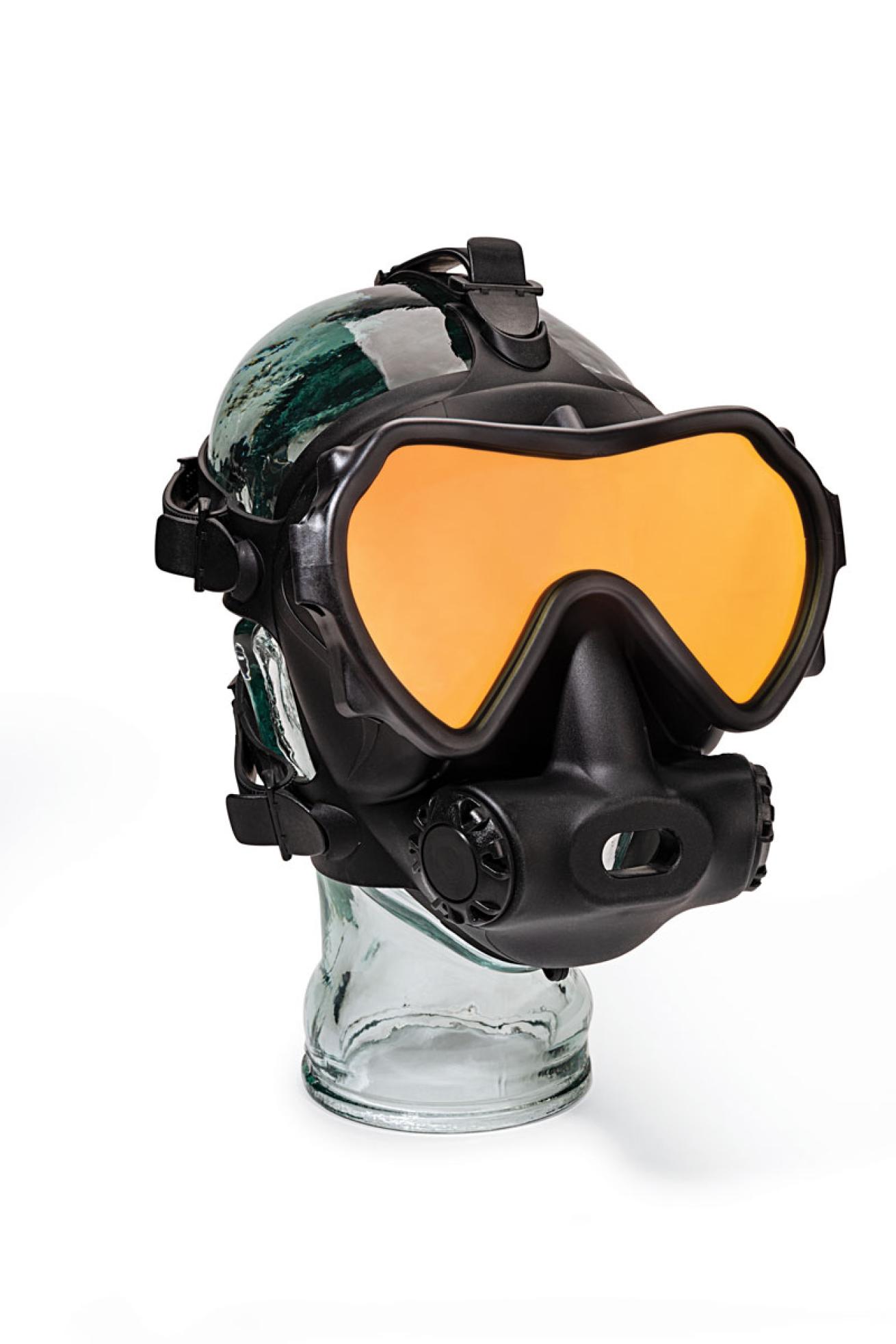
Jon Whittle$399 (mask); $819 (transceiver); oceantechnologysystems.com
This full-face mask lets you attach your own reg by disconnecting the mouthpiece. When coupled with the transceiver, it can be used for communication between divers or surface stations.


